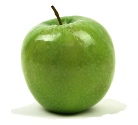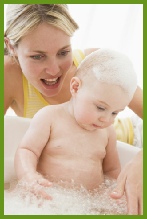



Helping you make healthy choices for you and your family


Diethanolamine (DEA), Monoethanolamine (MEA), and Triethanolmine (TEA) are hormone-disrupting chemicals known to form nitrates and nitrosamines, often in conjunction with other chemicals present in a product, e.g. Cocamide DEA, or Lauramide DEA. They are almost always in products that foam: bubble bath, body wash, shampoo, soap, facial cleanser.
You may find some of the chemical ingredients below, listed on the labels of products you regularly use for personal hygiene:
You may find some of the chemical ingredients below, listed on the labels of products you regularly use for personal hygiene:
On the US TV show "CBS This Morning", Roberta Baskin said that "It [DEA] is in hundreds of cosmetic products....but it does something more than make soap bubbles. A Federal government study says that DEA and DEA-based detergents have been shown to greatly increase the risk of cancer, especially liver and kidney cancer…."
John Bailey, head of the cosmetic division for the FDA, says that the new study is especially important since "the risk equation changes significantly for children." Tests at the University of Bologna in Italy found TEA to be the most frequent sensitiser used in cosmetics, gels, shampoos, creams, lotions, etc.
John Bailey, head of the cosmetic division for the FDA, says that the new study is especially important since "the risk equation changes significantly for children." Tests at the University of Bologna in Italy found TEA to be the most frequent sensitiser used in cosmetics, gels, shampoos, creams, lotions, etc.
U. S. Food and Drug Administration
Centre for Food Safety and Applied Nutrition
Office of Cosmetics Fact Sheet
December 9, 1999
The National Toxicology Program (NTP) completed a study in 1998 that found an association between the topical application of diethanolamine (DEA) and certain DEA-related ingredients and cancer in laboratory animals. For the DEA-related ingredients, the NTP study suggests that the carcinogenic response is linked to possible residual levels of DEA. The NTP study did not establish a link between DEA and the risk of cancer in humans.
Although DEA itself is used in very few cosmetics, DEA-related ingredients are widely used in a variety of cosmetic products. These ingredients function as emulsifiers or foaming agents and generally are used at levels of 1 to 5% of a product's formulation.
FDA takes the results of the NTP study very seriously and has made the assessment of public health risk one of the highest priorities for the cosmetics program. To determine whether or not the NTP findings suggest a risk to human health, FDA is in the process of carefully evaluating the studies and test data to determine the real risk, if any, to consumers. This evaluation includes laboratory studies to measure the degree to which DEA penetrates human skin and the amount of DEA found in commercial products.
The Agency believes that at the present time there is no reason for consumers to be alarmed based on the use of these substances in cosmetics. However, consumers wishing to avoid cosmetics containing DEA or DEA-related ingredients may do so by reviewing the ingredient statement that is required to appear on the outer container label of cosmetics offered for retail sale to consumers.
With the exception of colour additives and a few prohibited ingredients, a cosmetic manufacturer may use almost any raw material as a cosmetic ingredient.
Articles about Diethanolamine (DEA), Monoethanolamine (MEA) and Triethanolamine (TEA)
Click on the following links
Article about Diethanolamine on Cancer Prevention Coalition website
Time to Protect Babies From Dangerous Products
The Stop Cancer Book by Dr. Samuel Epstein of the Cancer Prevention Coalition
Material Safety Data Sheet for Diethanolamine
For more information, see our recommended list of books by clicking here
Although DEA itself is used in very few cosmetics, DEA-
FDA takes the results of the NTP study very seriously and has made the assessment of public health risk one of the highest priorities for the cosmetics program. To determine whether or not the NTP findings suggest a risk to human health, FDA is in the process of carefully evaluating the studies and test data to determine the real risk, if any, to consumers. This evaluation includes laboratory studies to measure the degree to which DEA penetrates human skin and the amount of DEA found in commercial products.
The Agency believes that at the present time there is no reason for consumers to be alarmed based on the use of these substances in cosmetics. However, consumers wishing to avoid cosmetics containing DEA or DEA-
With the exception of colour additives and a few prohibited ingredients, a cosmetic manufacturer may use almost any raw material as a cosmetic ingredient.
Articles about Diethanolamine (DEA), Monoethanolamine (MEA) and Triethanolamine (TEA)
Click on the following links
Article about Diethanolamine on Cancer Prevention Coalition website
Time to Protect Babies From Dangerous Products
The Stop Cancer Book by Dr. Samuel Epstein of the Cancer Prevention Coalition
Material Safety Data Sheet for Diethanolamine
For more information, see our recommended list of books by clicking here
DEA, MEA & TEA
Click on the calculator to find out how many chemical exposures you receive each week, month and year

|
|
Myristamide DEA
|
|
|
Oleamide DEA
|
|
|
Stearamide MEA
|
|
|
TEA-
|
|
|
Triethanolamine
|
|
|
Cocamide DEA
|
|
|
Cocamide MEA
|
|
|
DEA-
|
|
|
DEA Oleth-
|
|
|
Lauramide DEA
|
|
|
Linoleamide MEA
|
| Your Health Your Future |
| Controversial Ingredients |
| Nutritional State |
| Parent and Child |
| Microwave Ovens |
| Recommended Books |
| Skin Absorption |
| Sodium Lauryl Sulphate |
| Propylene Glycol |
| DEA, MEA, TEA |
| Chemical Calculator |
| Fluoride |
| Aspartame |
| Fluoridation |
| Water Filtration |
| Planning a Pregnancy |
| Pregnancy Care |
| Post Pregnancy Care |
| Amazon Books |
| EBooks |
| About Us |
| Health Services |
